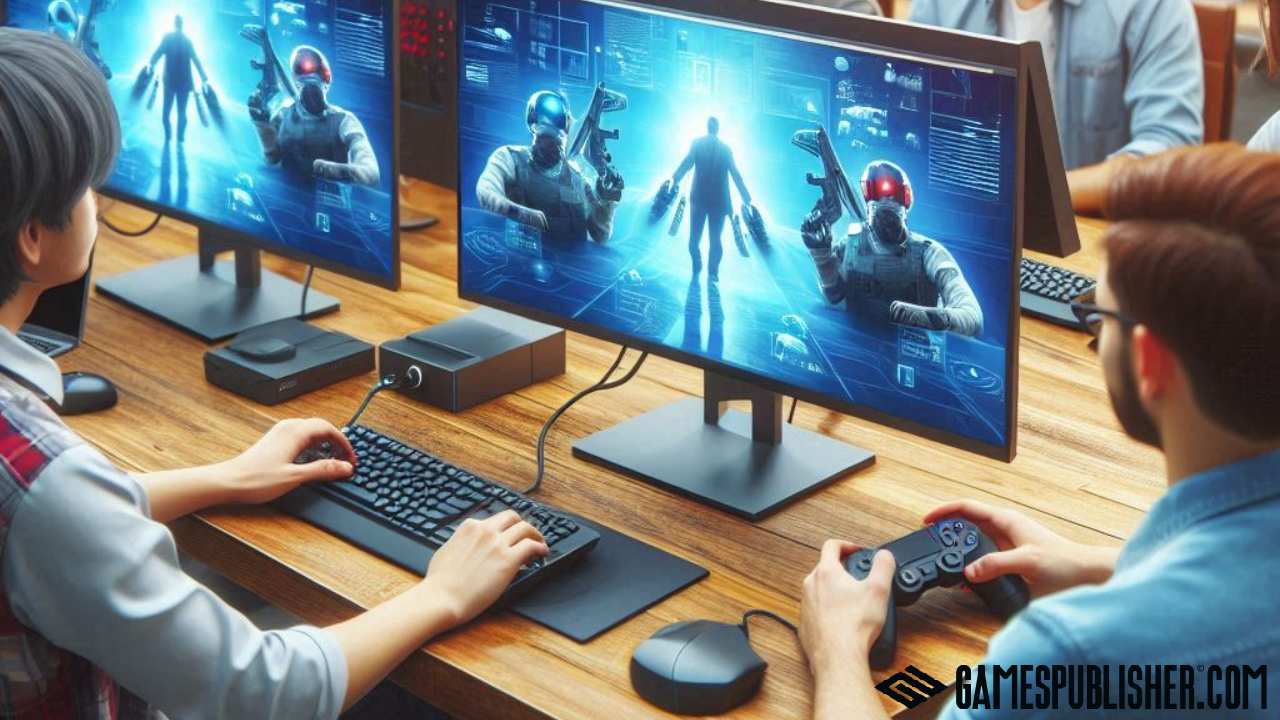Self-publishing is popular for indie game developers because it lets them control their games and keep all profits.
We know self-publishing can be challenging, so we’ll give you simple tips on the best game publishing tools and platforms in this article.
Thus, it will let you make your game ideas real and share them with people worldwide.
Why Self-Publish? The Benefits for Indie Developers
Self-publishing allows the owners to be independent of the games being created. So, you don’t need to follow significant company regulations or alter your beliefs.
You can have the opportunity to make an order or experiment with what you want creatively.
As an indie game developer, you control all aspects of your game, including the graphics, plot, and how the game will be played.
Self-publishing is financially advantageous because you retain the entirety of your earnings without needing to share a portion with a video game publisher.
You can understand that you get more cash to make more of the games or make your existing ones more exquisite.
Additionally, you need to build a community and receive direct feedback from players.
Marketing and sales are your responsibility; therefore, you will learn what players enjoy and what they desire to be altered.
It also enables you to create better games for your fans and ensures your fans are satisfied.
In other words, self-publishing gives you complete control over the game’s content, enables you to earn more money, and establishes a link with players.
The games of your desire will quickly be developed, monetized, and secure a large client base.
Key Considerations Before Self-Publishing
Market research is crucial for your game because it will inform you how your audience will act.
You can find out what your target market wants if you look at what is trending, look at other developers, and ask the players for their input.
All of these assist you in getting to know your audience and creating better ads with which they like interacting.
A financial planning plan ensures you have enough money to fund the game.

First, consider the costs of software and tools and any help you might need.
You cannot be short of cash by knowing these costs in your planning.
Subsequently, you have to keep aside money for marketing.
Marketing is how you inform people about your game, which can involve using money to advertise.
To pay for these expenses, you can use crowdfunding.
And if you have savings, you can use them to pay for your project to help you avoid debt and manage your money better.
It’s one of the ways you can ensure that you make your game within the means you have and achieve what you want.
Besides, time management is crucial for creating your game, marketing, and launching it.
Developing a product requires enough time to write that particular code, ensure it runs without a hitch, and then debug the system.
Imagine that you can effectively manage your time, and you’ll have a better chance to influence the possible results and increase the likelihood of making your game successful.
Essential Tools for Indie Game Development
Selecting the right tools is essential when making indie video games.
Let’s check the tools that will assist you in developing your game ideas and develop something extraordinary.
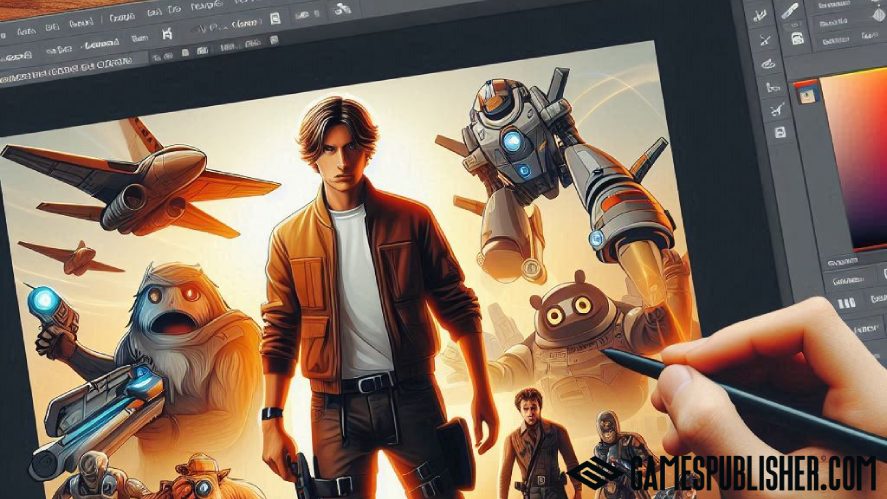
Game Engines
Unity is one of the most popular game engines for game development. It’s relatively easy to use, and there is plenty of help online.
You can use Unity to make both 2D and 3D games, especially for mobile devices. It also works well if you want to create VR and AR games.
On the other hand, Unreal Engine is often used for big games that need amazing visuals and powerful features.
Unreal Engine has a system called Blueprints that can help you when you don’t know much about programming.
That’s also good for VR and AR, but it can be harder to learn and require a more robust computer.
Moreover, Godot‘s open-source game engine is becoming popular among many developers. It’s well-suited for creating both 2D and 3D games.
Art and Design Tools
Creating game art involves using other tools, each suited to specific tasks.
Blender is used for 3D art. With Blender, you can build detailed models, add textures, and animate them so they move and look natural in the game.
Another tool is Adobe Photoshop, which is great for 2D art. Photoshop uses layers, so you can work on different parts of your art separately.
This makes it easier to change things and add details.
For pixel art, Aseprite is a good choice. It’s made just for creating pixel-based graphics and animations.
Aseprite can create pixel art-related projects that involve animation and color adjustments. It’s ideal for games with a retro or pixelated style.
Each tool is suitable for unalike game art types; in fact, some artists can use them all to get the best out of the game.
Sound and Music Tools
For sound design and making music, some great tools can help you and make the process easier.
Audacity is a free and user-friendly program that provides various tools, allowing you to easily capture audio recordings and perform detailed edits on those recordings.
Both beginners and experts can record sounds, cut and trim audio files, and add cool effects better.
FL Studio is another popular tool, and it’s known for being easy to use and having lots of powerful features.
Music-making is especially significant because it has many virtual instruments, effects, and sample sounds.
You can easily create music tracks, try different sounds, and arrange your music how you like it.
Finally, Bfxr is perfect for creating sound effects, especially when working on games.
It’s easy to use and lets you quickly make all sorts of sounds, from simple beeps to more complex noises. You can tweak different settings to get just the sound you want.
Self-Publishing Platforms for Indie Games
Choosing where to publish your indie game is essential.
This guide will look at popular digital game platforms, such as how to publish a game on Steam, sites like itch.io, and console options like Xbox and PlayStation, to help you choose the best for your game.
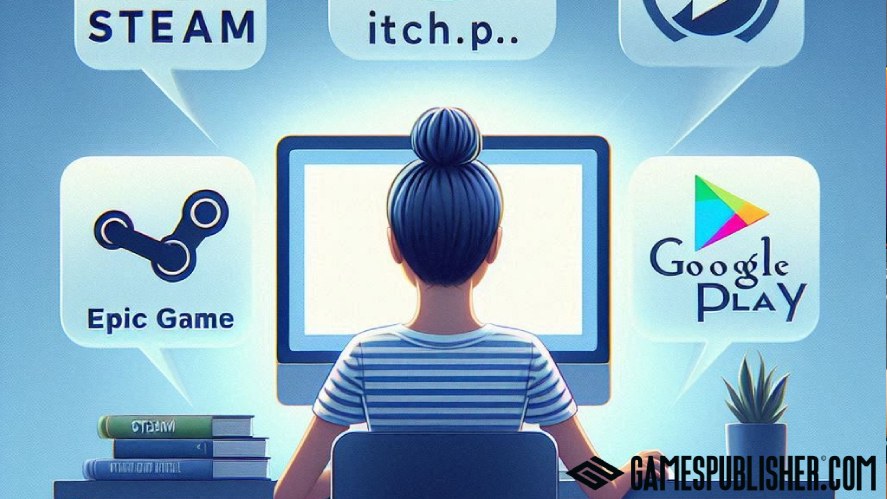
Digital Distribution Platforms
Digital video game distribution platforms help you sell your games to people everywhere. The four popular platforms below have pros and cons that can help you choose wisely.
Steam is the largest platform for game developers, and many people use it here, so your game can reach a lot of players.
However, Steam takes 30% of the money from each sale, which is quite a lot.
Next, Itch.io primarily features popular indie games, usually created by independent developers or small teams working without the backing of major studios.
A good thing about Itch.io is that you can choose how much money to give the platform, even keeping all the money if you want.
However, itch.io has fewer users, so fewer people might see your game.
Epic Games Store only takes 12% of each sale, so you keep more earnings.
However, the Epic Games Store doesn’t have as many features for chatting or groups, and it has fewer games than Steam.
Finally, the Google Play Store is the leading platform where a developer can sell Android mobile games, offering a vast marketplace for reaching a broad audience.
Games on Google Play can get many downloads and allow developers to make money in other ways, but it also keeps a 30% portion of the revenue earned from sales.
Console Platforms
When you want to publish a game on consoles like Xbox, PlayStation, or Nintendo Switch, there are some essential steps you need to follow.
First, you must sign up as a developer with the company that makes the console.
For Xbox, you can join the ID@Xbox program, which helps independent developers create and publish their games.
With PlayStation, you need to apply to the PlayStation Partners program, which will help you understand how to get your game onto their platform.
About Nintendo, it has a Developer Portal that shows you what you need to do to publish your game.
Once you’re accepted as a developer, you’ll get access to the tools and guidelines for each platform.
After you finish developing your game, including testing it and making any changes, the next step is submitting it for approval.
Every gaming console undergoes a thorough review process to ensure that any game created for it functions smoothly and meets all the necessary safety standards, ensuring the gameplay experience is enjoyable and secure for all players.
If your game passes the review, you’ll then set it up for release in the console’s online store and work on promoting it.
Marketing and Promotion Strategies for Indie Games
Indie games need innovative promotion to stand out so a developer can succeed.
We will show how to build a fanbase, make a press kit and pitch deck, and work with influencers to get more players.
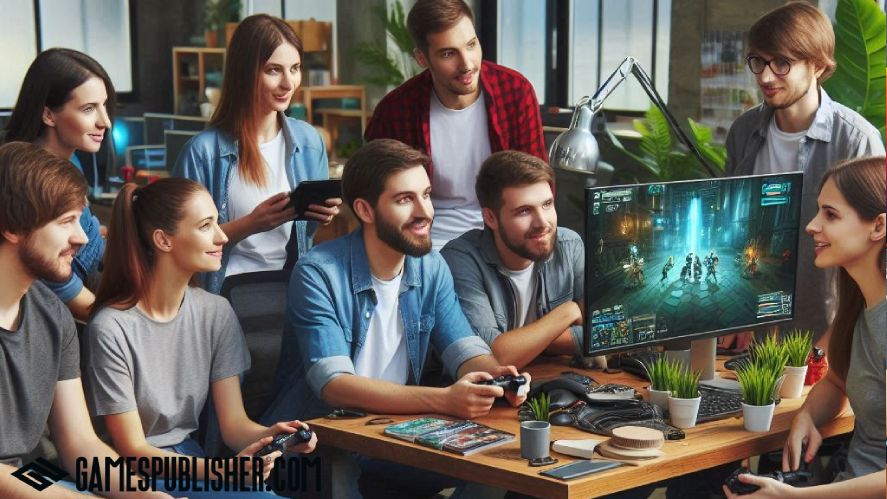
Building a Community
To establish a community for the game, register on social networking sites like Facebook, Twitter, or Instagram to share updates on your game in the form of pictures or videos.
Additionally, locate online forums with similar gamers of the right type for your game, then share your news with them.
Or go to sites and socialize with community services where gamers congregate.
As much as it is a game, always ensure you are not just there to sell it but also be friendly and try to make genuine interactions where necessary.
Try to participate in the discussions as much as possible, contribute to the answers you receive, and spread valuable information.
In these ways, developers can ensure a solid fan base.
Creating a Press Kit
A press kit is a very vital tool when it comes to marketing your game.
It helps to spread the word about your game more accessible to the media and generates public interest.
Your press kit should contain good images of your game so that whoever is interested can see what your game looks like.
This should accompany a trailer and a short video about the game’s features and how it could be played.
Furthermore, attach a press release with essential information, such as its release date and what makes your game unique.
Adding a fact sheet or a list of frequently asked questions about your game is also great.
Utilizing Influencers and Streamers
When contacting influencers and streamers, find people who match your game’s style and audience.

Send them a personal message explaining why they’d like your game. Then, mention specific parts of the game that fit their content.
Remember to offer them a free copy of the game and some extra perks, like early access or special items.
Be clear about what you hope for, like a review or a live stream, but don’t be too pushy.
Funding and Financial Resources
In the video game industry, sites like Kickstarter or Indiegogo enable you to collect money for your projects, taking small amounts from several individuals.
Kickstarter is ideal for creative and fun products such as games and graphic arts, while Indiegogo offers more opportunities and can be used to fund various types of projects.
Use good pictures or videos that draw their interest to ensure people open them.
Setting a sensible amount of money and advertising it through social networks and other platforms is also crucial.
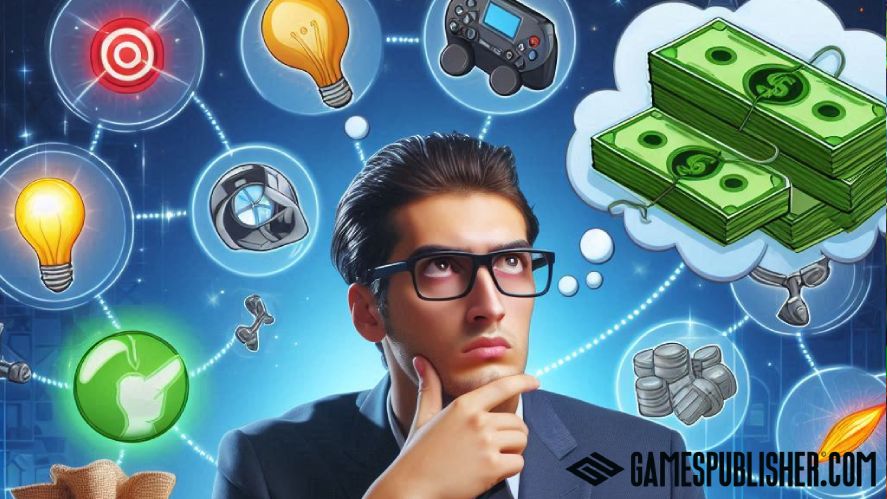
Another good source of money and a platform to present the game is grants and game competitions.
In fact, quite some organizations or companies provide indie game makers with grants out there.
Game competitions are events that are usually organized to display your game.
As a result, success will come to you through cash, skill improvement, or tips from professional players.
These events also make players or potential indie game publishers aware of your game and join or support you.
When you wish to publish your work, other publishers accepting indie writers may be your best bet.
Unlike the big publishers, game publishers for indie games will not compel you to alter your content.
Some assist with advertising your work and linking you up with others, but they do not decide for you.
This means that one can get assisted in as many ways as possible and simultaneously come up with the things that you may wish to come up with.
Legal and Administrative Resources
As a game creator, ensuring that the ideas you develop are protected is crucial.
Protecting your intellectual property (IP) is those that can be protected, such as your game design, your logo, and even the code you use.
In order not to allow other people to emulate your work, use copyrights and trademarks.

You must deposit your game with the copyright office to get this protection.
So, you will repeatedly encounter contracts and other agreements as an indie developer.
If there are ever people you share details of your game with, such as potential partners or investors, an NDA ensures they do not use or reveal the information incorrectly.
In another case, you’ll sign a game publishing agreement when you work with a publisher to release your game.
This contract discusses who the publisher is, what is required to do, the division of the profits, and other necessary conditions.
Moreover, you must consider taxes and business registration if you sell games.
Registering the business enables you to have some control over your finances and make sure your assets are shielded.
You must also pay taxes on your earnings from the games you develop.
Post-Release Support and Updates
After a game is released, it’s essential to keep improving it with bug fixes, patches, and updates.
Some bugs can cause the game to crash or not work correctly. Fixing these bugs quickly helps prevent these issues and makes the game more enjoyable.
Patches are minor updates created to address and fix particular issues or problems in your game, ensuring smoother operation and improved performance.
With updates, it can add new things to the game, like new levels, characters, or items. Adding new content keeps the game exciting and fun, so players don’t get bored.
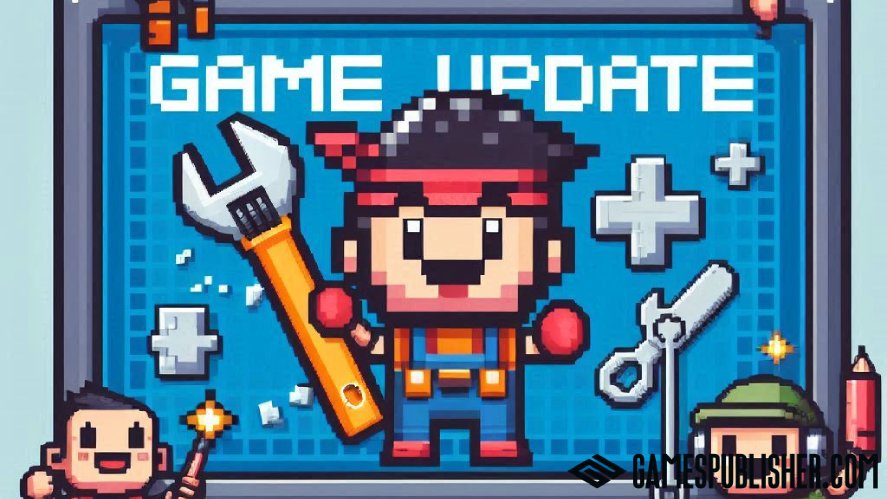
When players see that their feedback is heard and problems are fixed, they are likelier to keep playing and stay loyal to the game.
In summary, keeping a game updated in the above ways helps make sure it stays fun and successful over time.
Once a game has been released, it is crucial to maintain players’ interest to remain engaged and continue playing.
You can create forums where players can discuss the game, ask questions, and share tips.
Social media is also helpful. You keep players excited by posting updates about the game, like new features or fixes.
Let’s share behind-the-scenes stories about your game, making players feel more connected.
Live events can keep players interested, too. If possible, having in-person events or conventions allows players and the developer to meet each other, which helps build a stronger community.
Using these methods together helps keep players excited and connected to the game even after it is released.
Conclusion
Self-publishing your game is a great choice. It lets you decide how to market your game, keep most of the money you make, and make all the decisions yourself.
To do well, use the tools and resources we talked about to make your game better and get things done faster.
Check out Gamespublisher.com for more help. Here, you can find resources, guides, and articles to assist you in publishing indie games.
Loading survey...

